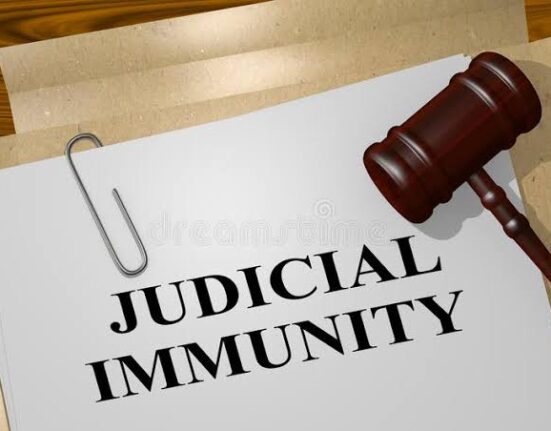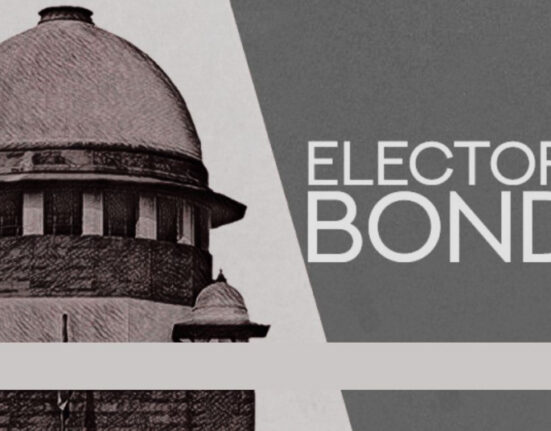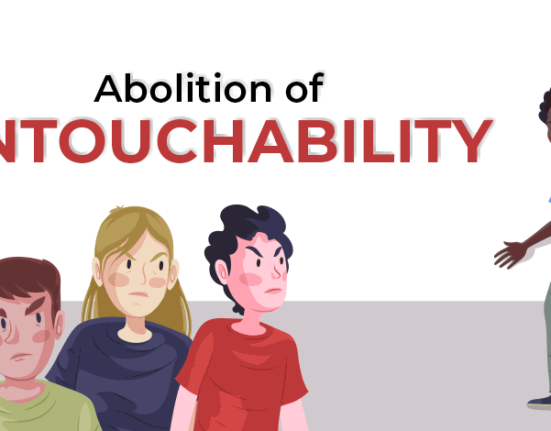This article, “Balancing Freedom of Expression in Democracy” is written by Vijetha Saishree Palle a 1st year Law student at Symbiosis Law School, NOIDA
INTRODUCTION
Freedom of expression stands as one of the pillars of democratic societies, allowing individuals to express their thoughts, beliefs, and ideas without fear of censorship or persecution. The right to express oneself freely is a fundamental human right recognised and protected by international law and national constitutions across the globe. Nonetheless, the broad canvas of freedom of expression also harbours shades of complexity. In certain instances, this liberty’s manifestation can be at odds with other rights or potentially inflict harm upon individuals or the communal tapestry. Striking a balance between the unfettered exercise of expression and the imperative to protect against harm becomes crucial.
However, as societies become more diverse and interconnected, the question arises: how far should freedom of expression extend before it infringes upon the rights and well-being of others? Striking the right balance between safeguarding this vital right and preventing harm is an intricate task that requires careful consideration. This article will explore the essence of freedom of expression, examine its limits, and discuss how societies can navigate these boundaries to foster a healthy, inclusive, and respectful discourse.
THE FUNDAMENTAL HUMAN RIGHT OF FREEDOM OF EXPRESSION
Freedom of expression is a cornerstone of democratic societies, a fundamental human right that enables open discourse, idea exchange, and diverse perspectives. Embedded in international treaties and national constitutions, its essence transcends borders, cultures, and time. This essay delves into its multifaceted nature, significance, challenges, and role in the modern world. At its core, freedom of expression is the foundation of democracy, empowering individuals to voice their thoughts without fear of censorship. It nurtures public discourse, enriches democracy by testing ideas, and holds governments accountable. Yet, balancing expression with harm prevention is complex. Hate speech, incitement to violence, and false information underscore the need to protect while preserving free speech’s essence.
Essentially, freedom of expression balances autonomy, societal cohesion, and welfare. Upholding this right requires responsibility and adaptation. As we navigate complexities, preserving this essence guides us toward a more enlightened future. At its core, freedom of expression encompasses the ability of individuals to articulate their thoughts, opinions, and ideas freely through various means, including spoken words, written texts, art, and digital communication. It is a fundamental human right enshrined in Article 19 of the Universal Declaration of Human Rights, which states, “Everyone has the right to freedom of opinion and expression. This right includes freedom to hold opinions without interference and to seek, receive and impart information and ideas through any media and regardless of frontiers”. Over the ages, the definition has evolved and taken various forms.
Certain proponents champion the harm principle as a guiding tenet in discussions surrounding freedom of expression. This principle asserts that the bounds of this freedom should be confined solely to instances where its exercise directly harms others. However, the interpretation of harm proves intricate, encompassing a spectrum spanning physical, emotional, and societal ramifications.
SEDITION: APPLICABILITY OF HARM PRINCIPLE
The application of the harm principle is particularly pertinent when examining the concept of sedition within the context of freedom of expression. Sedition involves speech or actions to incite rebellion or resistance against the established authority or government. Advocates of the harm principle contend that sedition may rightfully be curtailed, as its potential to foment civil unrest and undermine the stability of a society is substantial. By inciting citizens to challenge the rule of law, sedition poses a perceived harm to public order, which is pivotal for the harmonious functioning of any community.
However, scrutinising the harm principle reveals complexities. The definition of harm can vary greatly, from immediate physical harm to long-term emotional distress or societal discord. Identifying a clear threshold at which expression transforms into harm is no straightforward task. Moreover, the harm principle must contend with the inherent subjectivity in assessing harm’s gravity.
Sedition itself can be seen as a contentious topic. While curbing it may seem reasonable to preserve societal stability, concerns about suppressing dissenting voices and inhibiting the exploration of alternative ideas arise. The distinction between genuine concerns about harm and potential abuse of power to stifle criticism must be judiciously navigated.
The harm principle presents a nuanced perspective on the limits of freedom of expression. Its application intersects with contentious issues like sedition, where the potential harm to public order is evident. Yet, the inherent complexities in defining harm necessitate thoughtful consideration. Balancing the preservation of societal well-being with the protection of individual liberties remains a continuous challenge in shaping the contours of freedom of expression.
Sedition cases in India have been a subject of legal and public debate due to their implications for freedom of expression and the balance between safeguarding national security and protecting individual rights. Sedition, under Section 124A of the Indian Penal Code, refers to actions that promote disaffection against the government established by law.
2016 KANHAIYA KUMAR CASE
The 2016 Kanhaiya Kumar case marked a significant episode that brought to the forefront the intricate balance between freedom of expression and its limitations in India. Kanhaiya Kumar, a student leader at Jawaharlal Nehru University (JNU) in New Delhi, faced arrest and sedition charges following his alleged involvement in an event where slogans perceived as anti-national were raised.
The incident unfolded during a gathering organised to discuss the execution of Afzal Guru, a convict in the 2001 Indian Parliament attack case. The event generated allegations that slogans advocating secession and criticising the Indian state were chanted, triggering a nationwide debate about the extent of freedom of expression, particularly within academic settings.
Kanhaiya Kumar’s arrest sparked widespread protests both within and outside the university. Supporters argued that his apprehension infringed upon his right to express dissent and voice grievances against government policies. They contended that utilising sedition charges appeared excessive and that criticising the administration, even robustly, constitutes an indispensable facet of a democratic society.
Detractors of Kumar’s actions and proponents of his arrest contended that the slogans raised during the event crossed the boundary between legitimate criticism and speech of a seditious nature. They maintained that advocating for the nation’s disintegration or questioning its sovereignty through such slogans couldn’t be categorised as protected speech within the realm of freedom of expression. They emphasised that while dissent holds paramount importance, it shouldn’t extend to endorsing actions that jeopardise national unity and security.
The Kanhaiya Kumar case underscored the intricate challenge of harmonising the entitlement to freedom of expression with the necessity of preventing speech that could incite violence or threaten national well-being. The incident highlighted the nuanced task of discerning between permissible dissent and expressions that might disrupt public order or undermine the state’s stability. The aftermath of the case spurred broader discussions about universities as spaces for open discourse and individuals’ duty to responsibly exercise their freedom of expression without imperilling the nation’s fabric. The incident called attention to the significance of outlining precise criteria for defining sedition and addressing expressions that challenge the country’s foundational principles.
1978 MANEKA GANDHI VS. UNION OF INDIA
One of the most significant cases in the Indian context regarding the navigation of freedom of expression and its boundaries is Maneka Gandhi vs. Union of India (1978). This landmark judgment by the Supreme Court of India not only established the principle that the state cannot restrict freedom of speech and expression unless it is necessary for the protection of national security, morality, decency, or the rights of others but also set a precedent for future cases dealing with the balance between individual rights and state interests.
The case arose from a petition filed by Maneka Gandhi, a prominent Indian politician and social activist, against the Union of India. Maneka Gandhi had been convicted under the Indian Penal Code (IPC) for making false statements in a speech she delivered in the Indian Parliament. The speech was critical of the government’s handling of the Emergency, a state of emergency declared by the government in 1975, which suspended many fundamental rights and freedoms, including the right to freedom of speech and expression. The conviction was based on the fact that the speech was likely to incite violence and was not in the public interest.
The Supreme Court, in a unanimous decision delivered by Chief Justice H.R. Khanna, held that the state could not restrict freedom of speech and expression unless it were necessary for the protection of national security, morality, decency, or the rights of others. The court emphasised the importance of proportionality in restricting freedom of expression, stating that the state must adopt a reasonable and proportionate approach to regulate speech. The judgment effectively overturned the conviction of Maneka Gandhi, setting a precedent that has been influential in subsequent cases dealing with freedom of expression in India.
The Maneka Gandhi vs. Union of India (1978) case represents a pivotal moment in the Indian legal landscape, particularly regarding freedom of expression. The Supreme Court’s decision underscored the importance of balancing the state’s interest in maintaining public order and security with the individual’s right to freedom of speech and expression. The judgment clarified the legal boundaries of freedom of expression in India and set a precedent for future cases, emphasising the need for proportionality and justification in any restriction on freedom of expression. This case remains a reference point for legal scholars, judges, and advocates grappling with the complexities of freedom of expression in a democratic society.
1976 RAJ NARAIN VS. UNION OF INDIA
The case of Raj Narain vs. Union of India (1976) is a pivotal moment in the history of freedom of expression in India. Raj Narain, a prominent journalist and social activist, was blacklisted by the government, which prevented him from working in the public sector. The blacklisting was based on his writings and speeches that were critical of the government, and it was deemed to infringe upon his right to freedom of speech and expression. The case was brought to the Supreme Court of India, where it was argued that the government’s action was not justified under Article 19(2) of the Constitution, which allows the state to restrict freedom of speech and expression for the protection of national security, morality, decency, or the rights of others.
The Supreme Court, in a unanimous decision, held that the government’s action was not justified under Article 19(2) of the Constitution. The court emphasised the importance of proportionality and justification in restricting freedom of expression. It clarified that the state’s power to limit freedom of speech and expression must be exercised in a manner necessary to protect national security, morality, decency, or the rights of others and that the restriction must be the least restrictive means of achieving the stated objective. This judgment set a precedent for future cases dealing with the balance between individual rights and state interests, underscoring the importance of ensuring that freedom of expression is protected and exercised responsibly in a democratic society.
The Raj Narain case represents a significant milestone in the Indian legal landscape, particularly in freedom of expression. It highlights the complexities of navigating the boundaries of freedom of expression in a democratic society. In this case, the Supreme Court’s decision not only clarified the legal boundaries of freedom of expression in India but also set a precedent that continues to shape the legal landscape. As society and technology evolve, the courts will continue to grapple with the challenges of balancing freedom of expression with the state’s interest in maintaining public order and security. This ongoing dialogue is essential for ensuring that freedom of expression is protected and exercised responsibly in a democratic society.
CONCLUSION
We face a challenging puzzle in the ongoing quest to understand the boundaries of freedom of expression. This puzzle involves finding the right balance between speaking freely and ensuring the safety and well-being of individuals and society. Exploring this puzzle has shown us many different sides of the issue. Freedom of expression is like a shining light in a democratic society. It allows us to share ideas, learn from each other, and have open conversations. It’s a powerful tool that lets us challenge the status quo, voice our disagreements, and contribute our unique thoughts to the bigger picture. However, like any powerful tool, we must be careful how we use it.
While freedom of expression is essential, it does have some limits. The “harm principle” helps us understand when expressing ourselves might cause harm to others. This reminds us that even though we have the right to speak freely, we must be responsible and not spread hate, encourage violence, or share false information. Our world, with its different cultures, contexts, and technology, makes this even more complex. Figuring out how far freedom of expression should go means balancing our rights and what’s best for everyone. We have to be aware that our words can affect others, and that’s why there are limits. These limits protect us from causing harm or creating problems for society.
As we wrap up this exploration, it’s essential to know that deciding how far we can express ourselves freely is an ongoing conversation. It’s not something set in stone. It’s about understanding the time we live in, the cultures we’re part of, and the lessons we’ve learned from the past. Ultimately, it’s up to all of us to use our freedom of expression wisely and to respect each other’s viewpoints. The freedom of speech of an individual must not be extended to the degree that it erodes the right to freedom of expression of other members of the populace.
REFERENCE
Waldron, J. (2014) The harm in hate speech. Cambridge, MA: Harvard University Press.
Protecting the right to freedom of expression under the European … Available at: https://rm.coe.int/handbook-freedom-of-expression-eng/1680732814
Kanhaiya Kumar vs state of NCT of Delhi on 2 March 2016. Available at: https://indiankanoon.org/doc/77368780/
Menon, P. et al. (2019) Freedom of speech and expression, Academic. Available at: https://www.lawctopus.com/academike/freedom-of-speech-and-expression/







Leave feedback about this